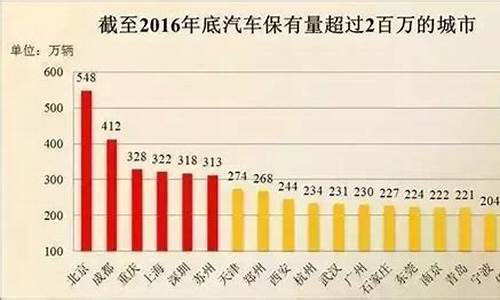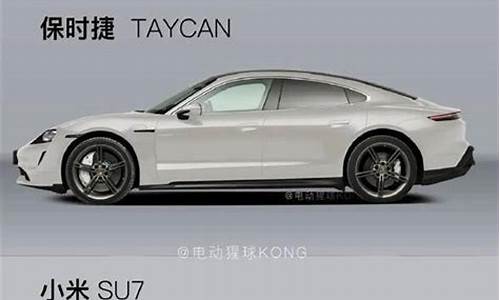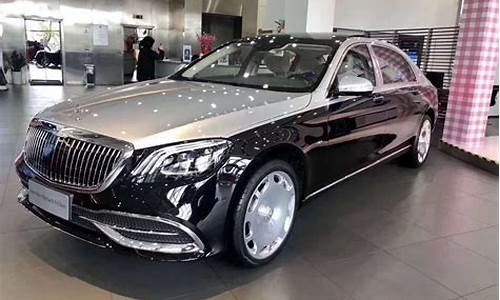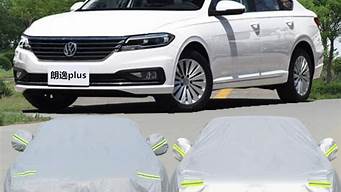haflinger_haflinger拖鞋
大家好,今天我要和大家探讨一下关于haflinger的问题。为了让大家更容易理解,我将这个问题进行了归纳整理,现在就让我们一起来看看吧。
1.平茨高尔的平茨高尔- 越野性能
2.英语作文关于克隆的相关句子和单词?
3.“斑马”的英语怎么读?

平茨高尔的平茨高尔- 越野性能
与Haflinger越野车一样,Pinzgauer越野车也用了全合金的中央管状车架。传动系统内藏于管状车架内。有了全防水密封驱动系统保护后,使Pinzgauer越野车在沼泽地或海边行走时,传动轴不会直接碰到水,在山地越野时传动轴也不会碰到岩石而损坏,减少了故障率及增加车辆性能的可靠性。Pinzgauer的前后差速器同样由合金管连接在一起,动力由Z式驱动系统从管外走进管内,配五前一后手动变速箱或4速自动变速箱,半时四驱分动箱,分高低挡,更可配上PTO输出轴,方便安装2吨绞盘或油压马达工具。Pinzgauer4X4越野车用四轮全独立悬挂系统,前轮配弹簧圈和油压避震筒,后轮配双弹簧圈和油压避震筒。6X6越野车,前轮与4X4的一样,后轮除了油压避震筒外,还用叶片将第二组、第三组车轮连接。为进一步加强越野性能,Pinzgauer越野车的前后桥都有机械式差速器,差速器由双减速齿轮传动,
并附有机械锁死功能,另外,Pinzgauer越野车还有多个中央差速器。为了提高离地距离,保证整车高度不大幅度提高的前提下,车底净高保持较高水平,以增加车辆的通过性, Pinzgauer越野车在车桥与车轮间用drop.Gear(低一级齿轮)设计,使离地间隙增至335Mm。 与奔驰Unimog越野车一样,Pinzgauer越野车也具有接近角大,动力强劲,差速锁、差速器使得动力分配好,轮胎抓地能力强,悬挂强大,离地间隙大,车身、电路密封性好,涉水性能强等特点。整个设计完全为了真正的越野,没有一样中看不中用的设计。在越野性能方面,可以和Pinzgauer越野车相比的只有奔驰Unimog越野车。Pinzgauer越野车算的上是世界上最悍的中吨位全地形车之一,因此,历经了30多年,该车依
然有顽强的生命力,而与其同代的对手,如英国的Land Rover FC101则早己停产。目前,Pinzgauer越野车由英国车辆技术(Automotive Technik,ALT)公司在英国继续生产,与奔驰Unimog越野车一样,Pinzgauer越野车也成为了越野车中的不死鸟。
英语作文关于克隆的相关句子和单词?
la heure 写成 l'heure 更准确地说应该叫连诵,“缩写”通常指的是比如:CCTV就是China central television的缩写,ONU则是Organisme des Nations unies(联合国的法语说法)的缩写。
所以如果你想知道有哪些缩写,那法语中简直太多了,法国人超喜欢把各种成为缩写来简化书写。
我估计你是想知道法语中哪些元音或者哑音h开头的单词,能够让冠词le或者la与之连写。
法语中凡是以a/e/o/u等等元音开头的单词和哑音h开头的单词都符合上述规则,常见的哑音h单词有habille(穿),hier(昨天),humeur(幽默),huit(八),histoire(历史)
hiver(冬天),honneur(荣誉),heure(小时)等。而像hauteur, hache 等嘘音h开头的单词则不能与le la连诵。这类单词有很多,遇到的时候记一下就行。
参考嘘音h开头的部分单词:
h?blerie
h?bleur/euse
hachage
hache
haché/e
hache-viande
hache-légumes
hache-paille
hachement
hacher
hachette
hacheur
hachis
hachisch
hachoir
hachure
hachurer
hackle
hadal/e/aux
haddock
haflinger
hafnium
hagard
haggis
haie
haillon
haillonneux/euse
haine
haineusement
haineux/euse
ha?r
haire
ha?ssable
Ha?tien/enne
halage
h?lage
halal
“斑马”的英语怎么读?
Cloning in biology is the process of producing populations of genetically-identical individuals that occurs in nature when organisms such as bacteria, insects or plants reproduce aually. Cloning in biotechnology refers to processes used to create copies of DNA fragments (molecular cloning), cells (cell cloning), or organisms. More generally, the term refers to the production of multiple copies of a product such as digital media or software.
Molecular cloning refers to the process of making multiple copies of a defined DNA sequence. Cloning is frequently used to amplify DNA fragments containing whole genes, but it can also be used to amplify any DNA sequence such as promoters, non-coding sequences and randomly fragmented DNA. It is used in a wide array of biological experiments and practical lications ranging from genetic fingerprinting to large scale protein production. Occasionally, the term cloning is misleadingly used to refer to the identification of the chromosomal location of a gene associated with a particular phenotype of interest, such as in positional cloning. In practice, localization of the gene to a chromosome or genomic region does not necessarily enable one to isolate or amplify the relevant genomic sequence.
In practice, in order to amplify any DNA sequence in a living organism, that sequence must be linked to an origin of replication, which is a sequence of DNA capable of directing the propagation of itself and any linked sequence. However, a number of other features are needed and a variety of specialised cloning vectors (small piece of DNA into which a foreign DNA fragment can be inserted) exist that allow protein expression, tagging, single stranded RNA and DNA production and a host of other manipulations.
Cloning of any DNA fragment essentially involves four steps [1]
fragmentation - breaking apart a strand of DNA
ligation - gluing together pieces of DNA in a desired sequence
transfection - inserting the newly formed pieces of DNA into cells
screening/selection - selecting out the cells that were successfully transfected with the new DNA
Although these steps are invariable among cloning procedures a number of alternative routes can be selected, these are summarized as a cloning strategy’.
Initially, the DNA of interest needs to be isolated to provide a DNA segment of suitable size. Subsequently, a ligation procedure is used where the amplified fragment is inserted into a vector (piece of DNA). The vector (which is frequently circular) is linearised using restriction enzymes, and incubated with the fragment of interest under ropriate conditions with an enzyme called DNA ligase. Following ligation the vector with the insert of interest is transfected into cells. A number of alternative techniques are ailable, such as chemical sensitivation of cells, electroporation and biolistics. Finally, the transfected cells are cultured. As the aforementioned procedures are of particularly low efficiency, there is a need to identify the cells that he been successfully transfected with the vector construct containing the desired insertion sequence in the required orientation. Modern cloning vectors include selectable antibiotic resistance markers, which allow only cells in which the vector has been transfected, to grow. Additionally, the cloning vectors may contain colour selection markers which provide blue/white screening (α-factor complementation) on X-gal medium. Nevertheless, these selection steps do not absolutely guarantee that the DNA insert is present in the cells oained. Further investigation of the resulting colonies is required to confirm that cloning was successful. This may be accomplished by means of PCR, restriction fragment analysis and/or DNA sequencing.
Cloning a cell means to derive a population of cells from a single cell. In the case of unicellular organisms such as bacteria and yeast, this process is remarkably simple and essentially only requires the inoculation of the ropriate medium. However, in the case of cell cultures from multi-cellular organisms, cell cloning is an arduous task as these cells will not readily grow in standard media.
A useful tissue culture technique used to clone distinct lineages of cell lines involves the use of cloning rings (cylinders)[2]. According to this technique, a single-cell suspension of cells which he been exposed to a mutagenic agent or drug used to drive selection is plated at high dilution to create isolated colonies; each arising from a single and potentially clonally distinct cell. At an early growth stage when colonies consist of only a few of cells, sterile polystyrene rings (cloning rings), which he been dipped in grease are placed over an individual colony and a small amount of trypsin is added. Cloned cells are collected from inside the ring and transferred to a new vessel for further growth.
Cloning in stem cell research
Main article: Somatic cell nuclear transfer
Somatic cell nuclear transfer can also be used to create a clonal embryo. The most likely purpose for this is to produce embryos for use in research, particularly stem cell research. This process is also called "research cloning" or "therapeutic cloning." The goal is not to create cloned human beings, but rather to harvest stem cells that can be used to study human development and to potentially treat disease. While a clonal human blastocyst has been created, stem cell lines are yet to be isolated from a clonal source.[3]
Horticultural
The term clone is used in horticulture to mean all descendants of a single plant, produced by vegetative reproduction or apomixis. Many horticultural plant cultivars are clones, hing been derived from a single individual, multiplied by some process other than ual reproduction. As an example, some European cultivars of grapes represent clones that he been propagated for over two millennia. Other examples are potato and banana. Grafting can be regarded as cloning, since all the shoots and branches coming from the graft are genetically a clone of a single individual, but this particular kind of cloning has not come under ethical scrutiny and is generally treated as an entirely different kind of operation.
Many trees, shrubs, vines, ferns and other herbaceous perennials form clonal colonies. Parts of a large clonal colony often become detached from the parent, termed fragmentation, to form separate individuals. Some plants also form seeds aually, termed apomixis, e.g. dandelion.
Parthenogenesis
Clonal derivation exists in nature in some animal species and is referred to as parthenogenesis (reproduction of an organism by itself without a mate). An example is the "Little Fire Ant" (Wasmannia auropunctata), which is native to Central and South America but has spread throughout many tropical environments.
Reproductive cloning
Reproductive cloning uses "somatic cell nuclear transfer" (SCNT) to create animals that are genetically identical. This process entails the transfer of a nucleus from a donor adult cell (somatic cell) to an egg which has no nucleus. If the egg begins to divide normally it is transferred into the uterus of the surrogate mother.
Such clones are not strictly identical since the somatic cells may contain mutations in their nuclear DNA. Additionally, the mitochondria in the cytoplasm also contains DNA and during SCNT this DNA is wholly from the donor egg, thus the mitochondrial genome is not the same as that of the nucleus donor cell from which it was produced. This may he important implications for cross-species nuclear transfer in which nuclear-mitochondrial incompatibilities may lead to death.
Dolly the Sheep
Main article: Dolly the Sheep
Dolly (1996-07-05 – 2003-02-14), a Finn Dorsett ewe, was the first mammal to he been successfully cloned from an adult cell, though the first actual thing to be cloned, was a tadpole in 1952[1]. She was cloned at the Roslin Institute in Scotland and lived there until her death when she was six. On 2003-04-09 her stuffed remains were placed at Edinburgh's Royal Museum, part of the National Museums of Scotland.
Dolly was publicly significant because the effort showed that the genetic material from a specific adult cell, programmed to express only a distinct subset of its genes, could be reprogrammed to grow an entire new organism. Before this demonstration, there was no proof for the widely spread hypothesis that differentiated animal cells can give rise to entire new organisms.
Cloning Dolly the sheep had a low success rate per fertilized egg; she was born after 277 eggs were used to create 29 embryos, which only produced three lambs at birth, only one of which lived. Seventy calves he been created from 9,000 attempts and one third of them died young; Prometea took 328 attempts. Notably, although the first clones were frogs, no adult cloned frog has yet been produced from a somatic adult nucleus donor cell.
There were early claims that Dolly the Sheep had pathologies resembling accelerated aging. Scientists speculated that Dolly's death in 2003 was related to the shortening of telomeres, DNA-protein complexes that protect the end of linear chromosomes. However, other researchers, including Ian Wilmut who led the team that successfully cloned Dolly, argue that Dolly's early death due to respiratory infection was unrelated to deficiencies with the cloning process.
Species cloned
Further information: List of animals that he been cloned
The modern cloning techniques involving nuclear transfer he been successfully performed on several species. Landmark experiments[clarify] in chronological order:
Tadpole: (1952) Many scientists questioned whether cloning had actually occurred and unpublished experiments by other labs were not able to reproduce the reported results.[citation needed]
Carp: (1963) In China, embryologist Tong Dizhou cloned a fish. He published the findings in a Chinese science journal which was never translated into English.[4]
Mice: (1986) was the first successfully cloned mammal; Soviet scientists Chaylakhyan, Veprencev, Sviridova, Nikitin had mice "Masha" cloned. Research was published in the magazine "Biofizika" volume ХХХII, issue 5 of 1987.[clarify][5]
Sheep: (1996) From early embryonic cells by S Willadsen. Megan and Morag[citation needed] cloned from differentiated embryonic cells in June 1995 and Dolly the sheep from a somatic cell in 19.[6]
Human: (November 1998) hybrid embryo created from leg cells and a cleaned cow egg - not allowed to implant in a womb, nor develop, nor be born due to ethical issues.[citation needed]
Rhesus Monkey: Tetra (female, January 2000) from embryo splitting[7][clarify]
Gaur: (2001) was the first endangered species cloned.[8]
Cattle: Alpha and Beta (males, 2001) and (2005) Brazil[9]
Cat: CopyCat "CC" (female, late 2001), Little Nicky, 2004, was the first cat cloned for commercial reasons[citation needed]
Mule: Idaho Gem, a john mule born 4 May 2003, was the first horse-family clone.[citation needed]
Horse: Prometea, a Haflinger female born 28 May 2003, was the first horse clone.[citation needed]
Human cloning
Main article: Human cloning
Human cloning is the creation of a genetically identical copy of an existing or previously existing human. The term is generally used to refer to artificial human cloning; human clones in the form of identical twins are commonplace, with their cloning occurring during the natural process of reproduction. There are two commonly discussed types of human cloning: therapeutic cloning and reproductive cloning. Therapeutic cloning involves cloning cells from an adult for use in medicine and is an active area of research: while reproductive cloning would involve making cloned human beings. Such reproductive cloning has not been performed and is illegal in many countries. A third type of cloning called replacement cloning is a theoretical possibility, and would be a combination of therapeutic and reproductive cloning. Replacement cloning would entail the replacement of an extensively damaged, failed, or failing body through cloning followed by whole or partial brain transplant.
The various forms of human cloning are controversial.[10] There he been numerous demands for all progress in the human cloning field to be halted. Some people and groups oppose therapeutic cloning, but most scientific, al and religious organizations oppose reproductive cloning. The American Association for the Advancement of Science (AAAS) and other scientific organizations he made public statements suggesting that human reproductive cloning be banned until safety issues are resolved [11]. Serious ethical concerns he been raised by the idea that it might be possible in the future to harvest organs from clones. Some people he considered the idea of growing organs separately from a human organism - in doing this, a new organ supply could be established without the moral implications of harvesting them from humans. Research is also being done on the idea of growing organs that are biologically acceptable to the human body inside of other organisms, such as pigs or cows, then transplanting them to humans, a form of xenotransplantation.
The first human hybrid human clone was created in November 1998, by American Cell Technologies.[12]. It was created from a man's leg cell, and a cow's egg whose DNA was removed. It was destroyed after 12 days. Since a normal embryo implants at 14 days, Dr Robert Lanza, ACT's director of tissue engineering, told the Daily Mail newspaper that the embryo could not be seen as a person before 14 days. While making an embryo, which may he resulted in complete human had it been allowed to come to term, according to ACT: "[ACT's] aim was 'therapeutic cloning' not 'reproductive cloning'"
On January, 2008, Wood and Andrew French, Stemagen's chief scientific officer in California, announced that they successfully created the first 5 mature human embryos using DNA from adult skin cells, aiming to provide a source of viable embryonic stem cells. Dr. Samuel Wood and a colleague donated skin cells, and DNA from those cells was transferred to human eggs. It is not clear if the embryos produced would he been capable of further development, but Dr. Wood stated that if that were possible, using the technology for reproductive cloning would be both unethical and illegal. The 5 cloned embryos, created in Stemagen Corporation lab, in La Jolla, were destroyed.[13]
://.cloneguide/
“斑马”的英语:zebra,读音:[?zebr?]。zebra
英 [?zebr?] ? 美 [?zibr?] ?
n.斑马。
adj.有斑纹的。
短语
1、Leptobotia zebra 斑纹薄鳅
2、Zebra Mbuna 斑马拟丽鱼
3、Aplochiton zebra 条纹单甲南乳鱼
4、Zebrias zebra 条鳎
5、Zebra jasper 斑纹碧石
例句:
The?most?famous?of?these?gifts?were?a?giraffe?and?a?zebra.?
这些礼物中最著名的是一只长颈鹿和一只斑马。
扩展资料:
zebra的词汇搭配:
1、zebra color tube 斑纹彩色显像管...。
2、zebra roof 斑马状炉顶,联合式屋...。
3、zebra tube 斑纹彩色显象管...。
4、zebra butterfly 白带纲纹蛱蝶。
5、zebra danio 斑马鱼。
其他种类马的英文:
1、乘用小型马 Riding Pony
2、柯柏马 Cob ?
3、马球小型马 Polo Pony ?
4、冰岛马 Icelandic Horse?
5、挪威峡湾马 Fjord ?
6、哥德兰马 Gotland
7、胡克尔马 Hucul
8、柯尼克马 Konik
9、哈菲林克尔马 Haflinger
10、阿列日马 Ariegeois
11、兰道斯马 Landais ?
12、波特克马 Pottock
今天关于“haflinger”的讨论就到这里了。希望通过今天的讲解,您能对这个主题有更深入的理解。如果您有任何问题或需要进一步的信息,请随时告诉我。我将竭诚为您服务。
声明:本站所有文章资源内容,如无特殊说明或标注,均为采集网络资源。如若本站内容侵犯了原著者的合法权益,可联系本站删除。












